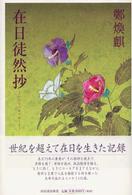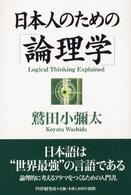Full Description
Colombia's headline story, about the peace process with guerrilla and its attendant controversies, does not consider the fundamental contradiction of a nation that spans generosity and violence, warmth and hatred—products of its particular pattern of invasion, dispossession, and enslavement. The Persistence of Violence fills that gap in understanding. Colombia is a place that is two countries in one—the ideal and the real—summed up in the idiomatic expression, not unique to Colombia, but particularly popular there, "Hecha la ley, hecha la trampa" (When you pass a law, you create a loophole). Less cynically, and more poetically, the Nobel Laureate Gabriel GarcÍa MÁrquez deemed Colombians capable of both the most noble acts and the most abject ones, in a world where it seems anyone might do anything, from the beautiful to the horrendous.The Persistence of Violence draws on those contradictions and paradoxes to look at how violence—and resistance to it—characterize Colombian popular culture, from football to soap opera to journalism to tourism to the environment.
Contents
List of Figures
Introduction: The Persistence of Violence
Chapter One: The Absence and Presence of State Militarism: Violence, Football, Narcos (with Alfredo Sabbagh Fajardo)
Chapter Two: Industry Policy and Sex Tourism Meet the Case of the Destroyed Plaque (with Olga Lucia Sorzano and Anamaria Tamayo Duque)
Chapter Three: 'I Myself Had to Remain Silent When They Threatened My Children': Colombian Journalists and Self-Censorship Meet Prime-Time Narcos (with Marta Milena Barrios and JesÚs Arroyave Cabrera)
Chapter Four: Green Passion Afloat: The Magdalena River (with Marta Milena Barrios)
Conclusion
Acknowledgments
Bibliography







